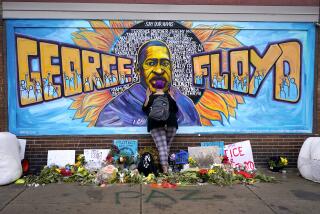Misperceptions fueled the Trayvon Martin/George Zimmerman tragedy
A string of misperceptions has driven the Trayvon Martin/George Zimmerman tragedy from the very beginning, including the public misperception that perfect justice can be found in a court of law.
The misperception that propelled events from the very start was Zimmerman’s assumption that a black kid in a hoodie did not belong in his neighborhood. If he had known Martin was the guest of a local resident with no other mission than to reach home with the package of Skittles he had just purchased, Zimmerman would not have followed the young man. In fact, if he had simply not held a stereotype in his head that a young African American in a hoodie is very likely a criminal, Martin would be alive today and Zimmerman would not have had his own life turned upside down.
Conversely, if Martin had not looked at Zimmerman and seen a “cracker” – as Martin described Zimmerman in a phone call to a friend when he noticed Zimmerman behind him – he may have reacted with less fear and anger. If he had seen George Zimmerman as he appeared in court – cleanshaven, wearing a nice suit – perhaps nothing more would have happened than a brief, heated conversation. Instead, he saw a burly Latino man with a goatee, a baseball cap and clothes that made him look like a tough guy from the streets.
Once Martin lay dead and Zimmerman was identified as the shooter, it became convenient for commentators and activists to mold perceptions in ways that served their purposes. Some pushed the image of Zimmerman as a white racist vigilante and Martin as a callow child. Others portrayed Zimmerman as a well-intentioned Latino with a civic conscience who was overwhelmed by a physically imposing marijuana user.
Now, with the verdict in and Zimmerman a free man, it is clear that many people misperceived the strength of the case against him. The one fact that is undisputed is that Zimmerman killed Martin. That is all some people need to know to believe the man should be in jail. But the law said something different.
No matter what Zimmerman’s motivations may have been, no matter his feelings about black people, no matter that a police dispatcher told him not to get involved, despite any of that, the prosecution failed to undermine Zimmerman’s story that, in the thick of the confrontation, it was he who felt threatened. Even though Zimmerman’s attorneys did not base their defense on Florida’s “stand your ground” law, the judge’s instructions to the jury had to take that into account. Like it or not, Florida law gave him the right to pull a gun and shoot.
Now some will argue that, apart from the prosecution’s poorly crafted case, Zimmerman was helped by the fact that the jury was composed of five white women and one Latino woman who may harbor their own biases and fears regarding young black men. An all black jury may have perceived things differently. They might have had more sympathy with Martin. They might have found Zimmerman guilty.
The question then would be, should justice turn on the racial makeup of a jury? Shouldn’t the law be applied the same way, no matter the skin color of the defendant or the victim? What would the right outcome be in this horribly tragic situation? Does fidelity to the letter of the law produce real justice?
It depends on your perception. Given the overreach of the prosecutors in seeking a conviction on second-degree murder, and given the scant evidence about what really happened, the law dictated a not guilty verdict. That does not mean Zimmerman did not do something terrible, but, bizarre as it may seem, it was impossible to prove he broke the law when he did it.
More to Read
A cure for the common opinion
Get thought-provoking perspectives with our weekly newsletter.
You may occasionally receive promotional content from the Los Angeles Times.











